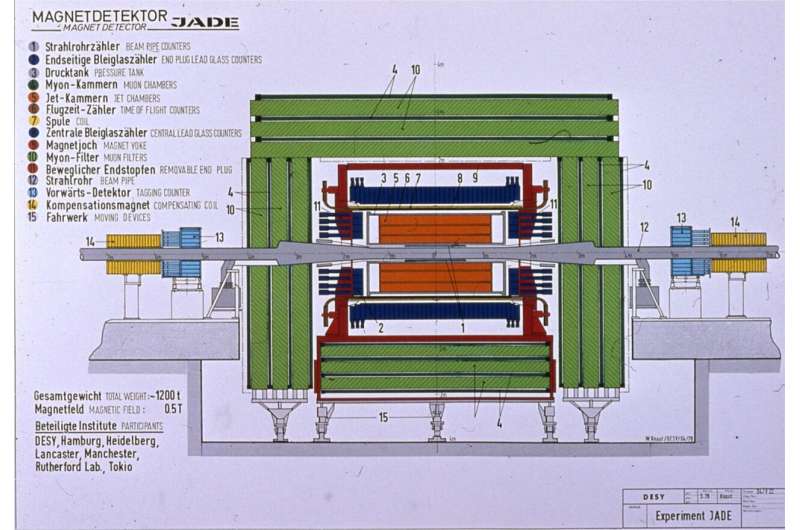This article has been reviewed according to Science X's editorial process and policies. Editors have highlighted the following attributes while ensuring the content's credibility:
fact-checked
trusted source
proofread
Quarks and gluons: The JADE experiment at DESY

A new paper in The European Physical Journal H (EPJ H) describes the JADE experiment at DESY in Hamburg, in which high-energy electron-positron collisions led to the discovery of the particle that holds quarks together to form protons and neutrons: the gluon.
The DESY research center in Hamburg has been at the center of German physical science research since the 1960s, leading to important discoveries about the fundamental structure of matter. One experiment at DESY, known as JADE, recorded data on electron-positron collisions between 1979 and 1986. Siggi Bethke from the Max Planck Institute of Physics in Munich and Albrecht Wagner from DESY have now reviewed the history of JADE in the journal EPJ H.
The name JADE derives from the countries involved in its consortium: Japan, Deutschland (Germany) and England. It was one of five experiments that ran on a circular electron-positron collider known as PETRA which, at the time of its construction in the 1970s, was the largest storage ring in the world.
A positron is the positively-charged antimatter equivalent of an electron. When positrons and electrons are collided at high energy they annihilate, generating further elementary particles that are short-lived in isolation. The most significant achievement of JADE was probably the co-discovery of one such particle, the gluon, and the exploration of its features.
Gluons are the "exchange quanta" of the Strong Force, which is one of the four fundamental forces of nature along with the Electromagnetic Force, the Weak Force (responsible for radioactive decays) and gravitation. It is the force that binds quarks together to form protons and neutrons (the constituents of atomic nuclei), so gluons can be thought of as the "glue" that holds these fundamental particles together.
Comparison of gluon traces observed in JADE with predictions from the theory of quantum chromodynamics (QCD) that had first been proposed a few years earlier confirmed the veracity of this theory. "This was one of the motivations for the award of the 2004 Nobel Prize for Physics to three physics who originally developed QCD," says Bethke.
The review describes how the data obtained by JADE and the software used for its analysis had been preserved for future use. "JADE's data is unique, and it is useful to be able to re-analyze it with improved knowledge and techniques," concludes Bethke.
More information: S. Bethke et al, The JADE experiment at the PETRA e+e- collider: history, achievements and revival, The European Physical Journal H (2022). DOI: 10.1140/epjh/s13129-022-00047-8
Provided by Springer





















